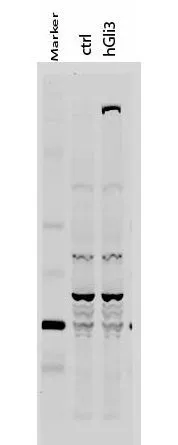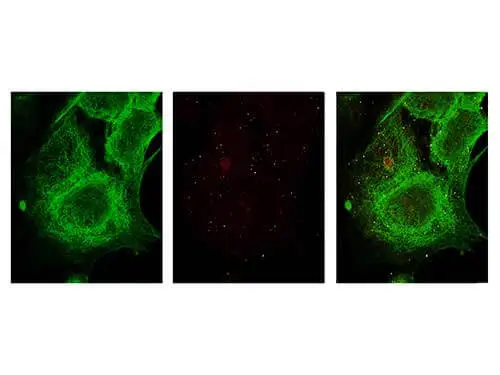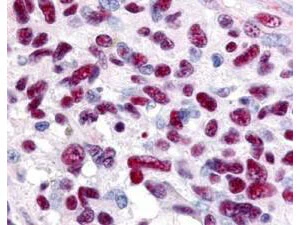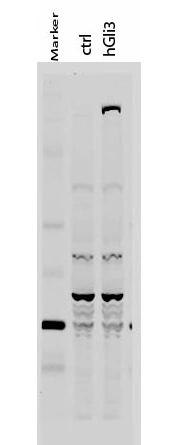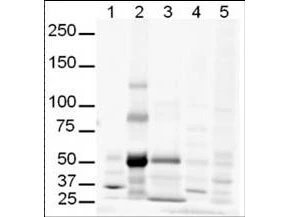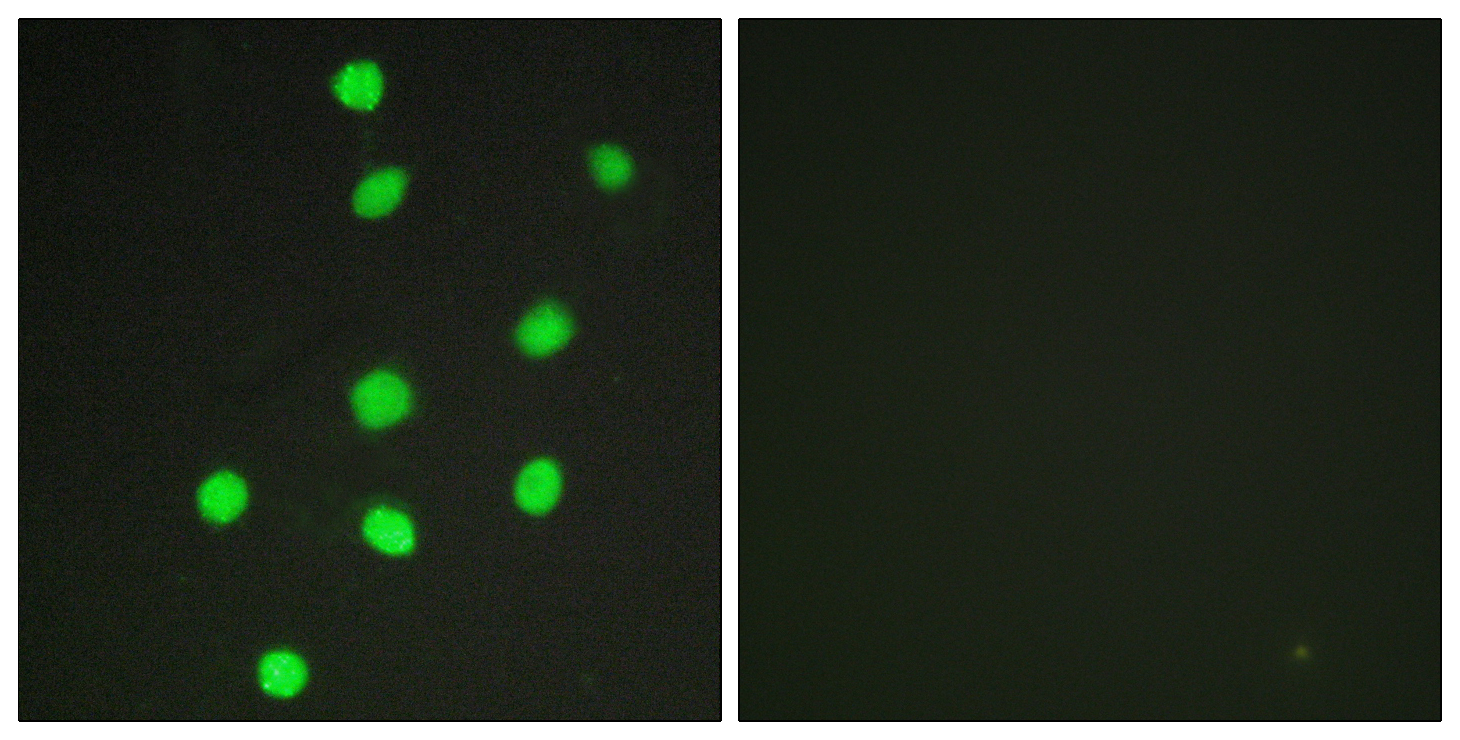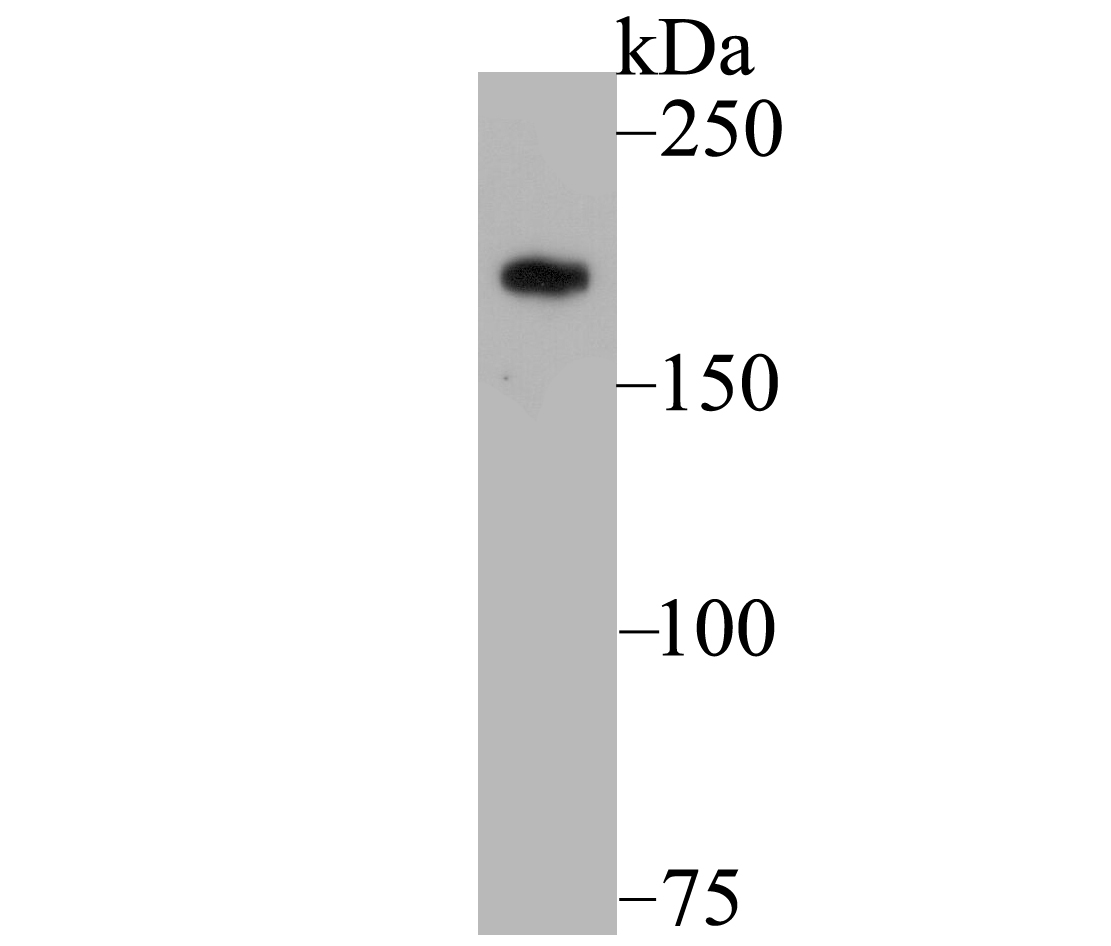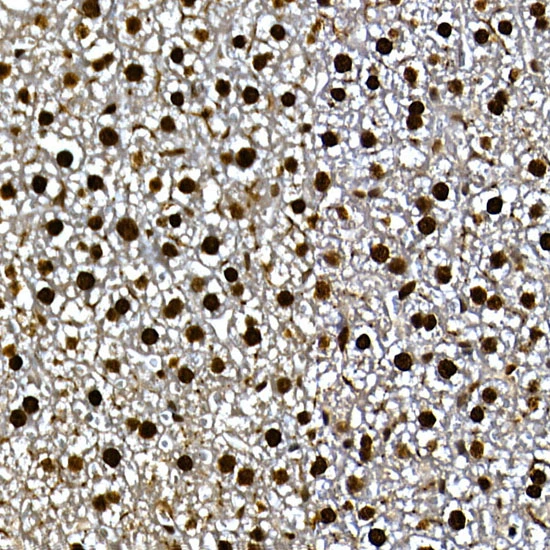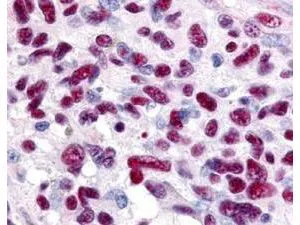
Immunohistochemistry of Rabbit anti-Gli-3 antibody (GTX26050). This image tissue: human glioblastoma. Specific staining was also noted in tissue from adrenal, brain, glioblastoma, colon, heart, kidney, lung, liver, skeletal muscle, ovary, pancreas, placenta, skin, spleen, stomach, testes, thymus, thyroid, tonsil and uterus. Fixation: formalin fixed paraffin embedded. Antigen retrieval: not required. Primary antibody: Gli-3 antibody at 0.625 microg/ml for 1 h at RT. Secondary antibody: Peroxidase rabbit secondary antibody at 1:10,000 for 45 min at RT. Localization: Gli-3 is nuclear and smooth muscle. Staining: Gli-3 as precipitated red signal with hematoxylin purple nuclear counterstain.
GLI3 antibody
GTX26050
ApplicationsImmunoFluorescence, Western Blot, ELISA, ImmunoCytoChemistry, ImmunoHistoChemistry, ImmunoHistoChemistry Paraffin, Other Application
Product group Antibodies
TargetGLI3
Overview
- SupplierGeneTex
- Product NameGLI3 antibody
- Delivery Days Customer9
- Application Supplier NoteWB: 1:500-1:2000. IHC-P: 0.5-5 microg/mL. ELISA: 1:6000-1:30000. *Optimal dilutions/concentrations should be determined by the researcher.Not tested in other applications.
- ApplicationsImmunoFluorescence, Western Blot, ELISA, ImmunoCytoChemistry, ImmunoHistoChemistry, ImmunoHistoChemistry Paraffin, Other Application
- CertificationResearch Use Only
- ClonalityPolyclonal
- Concentration1 mg/ml
- ConjugateUnconjugated
- Gene ID2737
- Target nameGLI3
- Target descriptionGLI family zinc finger 3
- Target synonymsACLS, GCPS, GLI3-190, GLI3FL, PAP-A, PAPA, PAPA1, PAPB, PHS, PPDIV, transcriptional activator GLI3, GLI-Kruppel family member GLI3, glioma-associated oncogene family zinc finger 3, oncogene GLI3, zinc finger protein GLI3
- HostRabbit
- IsotypeIgG
- Protein IDP10071
- Protein NameTranscriptional activator GLI3
- Scientific DescriptionGli3 is belongs to the GLI C2H2-type zinc-finger protein family and contains 5 C2H2-type zinc fingers. Gli3 is very important for normal limb and brain development and is implicated in the transduction of Shh signal. Gli3 is also expressed in a wide variety of normal adult tissues, including lung, colon, spleen, placenta, testis, and myometrium. Defects in GLI3 are the cause of Greig cephalo-poly-syndactyly syndrome (GCPS); an autosomal dominant disorder affecting limb and craniofacial development.
- Storage Instruction-20°C or -80°C,2°C to 8°C
- UNSPSC12352203
References
- Li N, Truong S, Nouri M, et al. Non-canonical activation of hedgehog in prostate cancer cells mediated by the interaction of transcriptionally active androgen receptor proteins with Gli3. Oncogene. 2018,37(17):2313-2325. doi: 10.1038/s41388-017-0098-7Read this paper
- Hunt R, Bragina O, Drews M, et al. Generation and characterization of mouse monoclonal antibody 5E1 against human transcription factor GLI3. Hybridoma (Larchmt). 2007,26(4):231-40.Read this paper
- Hunt R, Bragina O, Drews M, et al. Generation and characterization of mouse monoclonal antibody 5E1 against human transcription factor GLI3. Hybridoma (Larchmt). 2007,26(3):131-9.Read this paper

